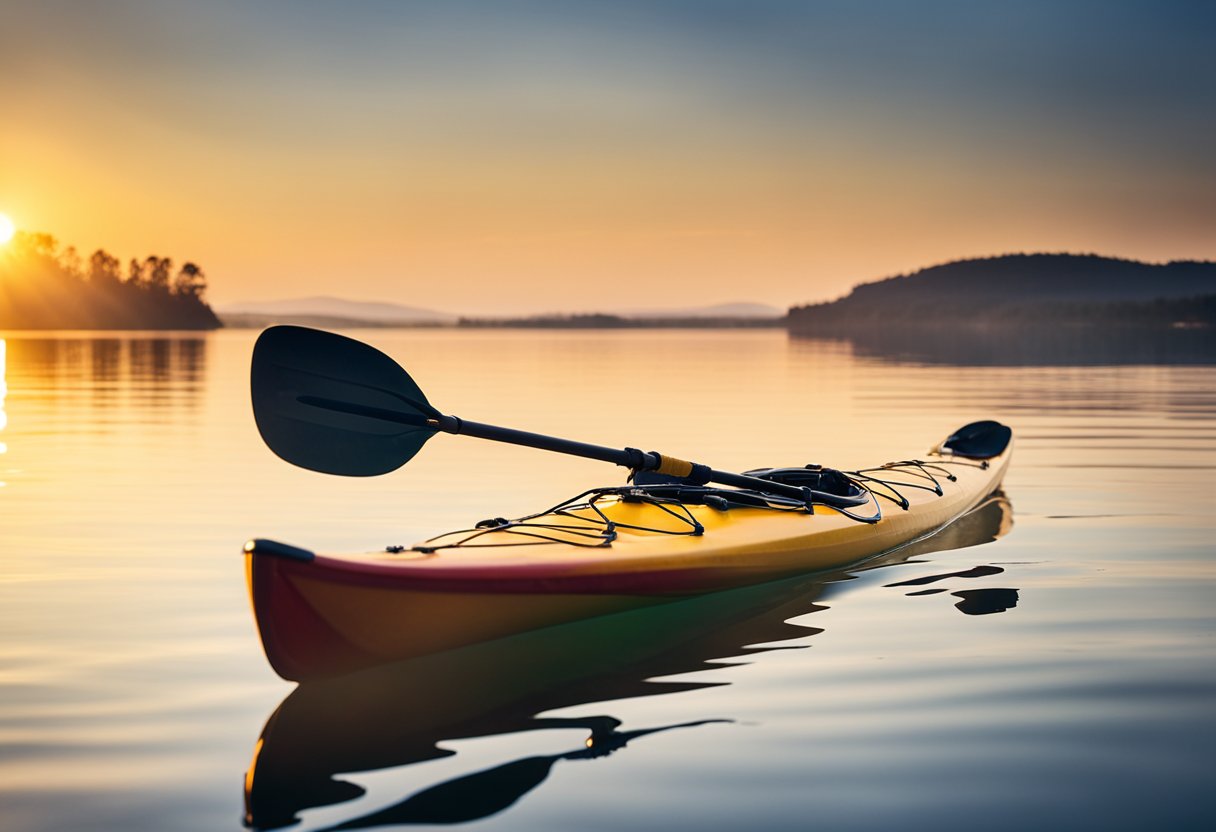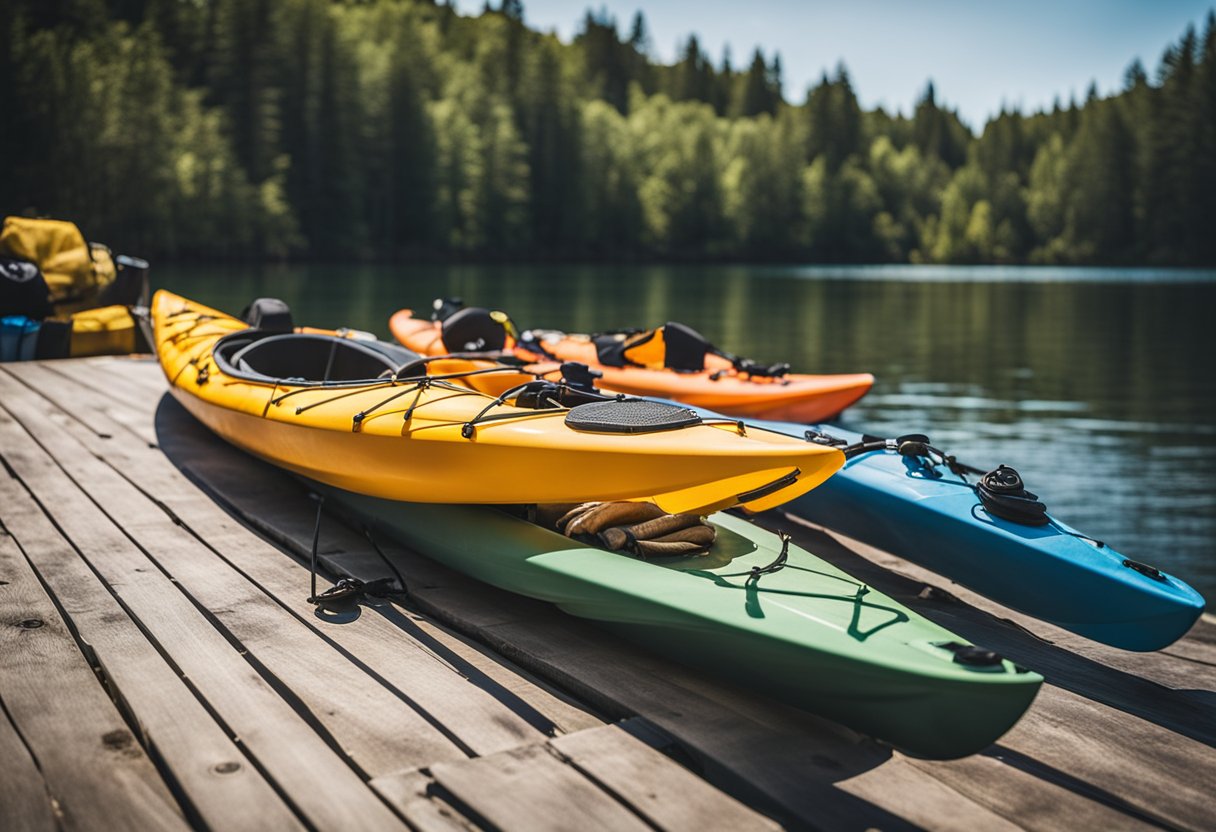Kayaking is a great way to explore the outdoors and get some exercise. However, choosing the right kayak paddle can make all the difference in your experience on the water. The length and style of your paddle can affect your speed, maneuverability, and comfort while kayaking. In this article, we will discuss how to pick the perfect kayak paddle length and style to suit your needs.

When choosing a kayak paddle, the length is an important factor to consider. A paddle that is too short or too long can cause discomfort and make it difficult to control your kayak. The length of your paddle will depend on your height, the width of your kayak, and your paddling style. In general, taller kayakers will require longer paddles, while shorter kayakers will need shorter ones. Additionally, wider kayaks will require longer paddles, while narrower kayaks will need shorter ones.
The style of your kayak paddle is also important to consider. There are several different styles of kayak paddles, each with their own benefits and drawbacks. Some paddles are designed for speed, while others are designed for maneuverability or comfort. The style of your paddle will depend on your kayaking goals and preferences. By understanding the different styles of kayak paddles and their features, you can choose the perfect one for your needs.
Understanding Kayak Paddle Sizing

When it comes to kayaking, having the right paddle size can make a significant difference in your overall experience. A paddle that is too long or too short can lead to discomfort, fatigue, and even injury. Therefore, it is essential to understand the basics of kayak paddle sizing.
Paddle Length Basics
The length of a kayak paddle is determined by the distance between the two blades. The standard measurement used for paddle length is centimeters (cm). The length of the paddle you choose will depend on your height, the width of your kayak, and the type of paddling you plan to do.
Height and Boat Width Considerations
Your height is the primary factor in determining the length of your paddle. As a general rule, taller paddlers will require longer paddles, while shorter paddlers will need shorter paddles. However, the width of your kayak is also a crucial factor to consider. A wider kayak will require a longer paddle, while a narrower kayak will need a shorter paddle.
Sizing Charts and Formulas
Many manufacturers provide sizing charts and formulas to help you determine the appropriate paddle length for your height and kayak width. These charts and formulas take into account your height, the width of your kayak, and the type of paddling you plan to do.
It is important to note that these sizing charts and formulas are only guidelines. The best way to determine the right paddle length for you is to try out different lengths and see which one feels the most comfortable and efficient.
In conclusion, understanding kayak paddle sizing is crucial to ensure a comfortable and efficient paddling experience. By considering your height, kayak width, and paddling style, you can choose the right paddle length that fits your needs.
Choosing the Right Paddle Style
When it comes to kayaking, choosing the right paddle style is just as important as selecting the right kayak. The paddle style you choose will depend on your kayaking style, the type of water you’ll be paddling in, and your personal preferences. Here are some factors to consider when choosing the right paddle style:
Paddle Blade Shapes
Paddle blade shapes can vary greatly, and each shape has its own advantages and disadvantages. Here are some of the most common paddle blade shapes:
- Symmetrical: These blades are the same shape on both sides and are ideal for beginner kayakers. They offer a balanced stroke and are easy to use.
- Asymmetrical: These blades are longer on one side than the other and are designed to reduce torque on the wrist. They are ideal for touring and long-distance paddling.
- Diagonal: These blades are angled and are designed to provide a powerful stroke. They are ideal for whitewater kayaking and other high-intensity activities.
Paddle Shaft Types
The shaft of the paddle is also an important factor to consider. Here are some of the most common paddle shaft types:
- Straight Shaft: These paddles have a straight shaft and are ideal for beginner kayakers. They offer a simple, easy-to-use design.
- Bent Shaft: These paddles have a bent shaft and are designed to reduce wrist fatigue. They are ideal for touring and long-distance paddling.
- Adjustable Shaft: These paddles have an adjustable shaft and can be adjusted to different lengths. They are ideal for kayakers who share a paddle or who want to adjust their paddle length based on the conditions.
Materials and Weight
The material and weight of the paddle can also affect your paddling experience. Here are some of the most common materials and weights:
- Fiberglass: These paddles are lightweight and durable, making them ideal for touring and long-distance paddling.
- Carbon Fiber: These paddles are even lighter than fiberglass paddles and are ideal for high-intensity activities like whitewater kayaking.
- Aluminum: These paddles are heavier than fiberglass and carbon fiber paddles, but they are also more affordable. They are ideal for beginner kayakers.
Overall, choosing the right paddle style is all about finding the right balance between your kayaking style, the type of water you’ll be paddling in, and your personal preferences. By considering factors like blade shape, shaft type, and material, you can find the perfect paddle for your needs.
Assessing Paddle Performance

When selecting a kayak paddle, it is important to consider how the paddle will perform on the water. There are two key factors to consider: stroke efficiency and control/maneuverability.
Stroke Efficiency
Stroke efficiency refers to how much energy is required to move the kayak through the water. A paddle that is too short will require more strokes and more effort to cover the same distance as a longer paddle. On the other hand, a paddle that is too long will be difficult to control and may cause the paddler to tire quickly.
To determine the correct paddle length, the paddler should consider their height and the width of their kayak. A general rule of thumb is to add 8-10 inches to the paddler’s height for a touring paddle and 6-8 inches for a whitewater paddle. However, it is important to test different paddle lengths to find the most comfortable and efficient option.
Control and Maneuverability
Control and maneuverability refer to the paddle’s ability to steer and turn the kayak. A paddle with a wider blade will provide more control and stability, while a narrower blade will allow for quicker and more precise movements.
The paddle’s shape and angle also play a role in control and maneuverability. A paddle with a dihedral shape will be more stable and provide better tracking, while a paddle with a flat shape will be more versatile and allow for more aggressive strokes.
Ultimately, the paddler should choose a paddle that offers a balance of stroke efficiency and control/maneuverability based on their individual needs and preferences. Testing different paddle styles and lengths will help the paddler find the perfect fit for their kayaking adventures.
Personal Factors in Paddle Selection

When selecting a kayak paddle, there are several personal factors that should be taken into consideration. These factors can greatly affect the performance and comfort of the paddler while on the water.
Skill Level
The skill level of the paddler is an important factor to consider when selecting a paddle. Beginner paddlers may benefit from a shorter and wider blade, as it provides more stability and control. Intermediate and advanced paddlers may prefer a longer and narrower blade, as it offers more speed and efficiency.
Paddling Conditions
The type of water and weather conditions that the paddler will be encountering should also be taken into account when selecting a paddle. For calm and flat water, a shorter and wider blade may be suitable. For choppy or rough water, a longer and narrower blade may be more appropriate.
Physical Strength and Endurance
The physical strength and endurance of the paddler is another important factor to consider. A heavier and larger paddler may require a longer and wider blade to provide enough power and support. A smaller and lighter paddler may benefit from a shorter and narrower blade to reduce fatigue and strain.
Overall, selecting the right paddle length and style is essential for a comfortable and enjoyable kayaking experience. By taking personal factors into consideration, paddlers can ensure that they choose a paddle that suits their needs and abilities.
Practical Tips for Testing Paddles

When it comes to picking the perfect kayak paddle, testing is key. Here are some practical tips for testing paddles to ensure you find the right length and style for your needs.
Demo Days and Rentals
Many kayak shops and outdoor retailers offer demo days or paddle rentals. This is a great opportunity to test out different paddle lengths and styles before making a purchase. Take advantage of these opportunities to get a feel for the different options available.
On-Water Testing
Testing paddles on the water is the best way to get a sense of how they perform. Start by testing paddles that are the correct length for your height and kayak width. Then, try out different styles, such as high-angle and low-angle paddles, to see which feels most comfortable and efficient.
Pay attention to how the paddle tracks in the water, how much effort it takes to paddle, and how it feels in your hands. Consider factors such as weight, blade shape, and material to determine which paddle is right for you.
Consulting with Experts
If you’re still unsure about which paddle to choose, consult with an expert. Many kayak shops have knowledgeable staff who can help you select the right paddle for your needs. They can offer advice on paddle length, style, and material based on your height, kayak width, and intended use.
By testing out different paddles and consulting with experts, you can find the perfect kayak paddle to enhance your paddling experience.




